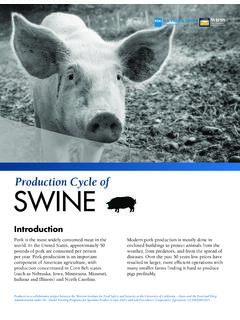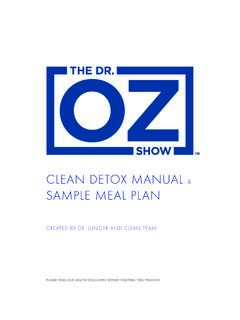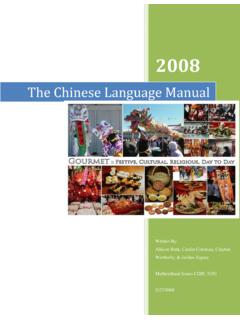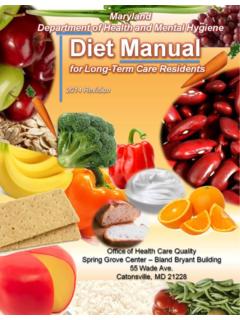Transcription of Livestock Production Manual - UC Davis Western Institute ...
1 LivestockProduction ManualTable of ContentsDairy and Veal Production 3 Dairy 6 9 Feeding and Record Life Cycle of Dairy Life Cycle of Veal Veal 20 Movement of Calves Through Veal Beef Cattle Cattle Beef Cattle Production System and Life Culling (Removal from a Herd)..33 Cattle Diseases, Treatments & Calves and Young Adult Tissue Residues and of ContentsSwine Swine Swine Swine Feeding Record Life Cycle of a Pig from Birth to Common Swine Diseases and Tissue Residues and Goat Goat Goat Goat Feeding Record Life Cycle of a Goat from Birth to Diseases and Tissue Residues and Components of a Biosecurity Visiting a Livestock Species Specific Biosecurity Developing Biosecurity Plans for Livestock This Manual was produced as a collaborative project between the Western Institute for Food Safety and Security at the University of California Davis and the Food and Drug Administration under the Model Training Programs for Specialty Produce Crops, Dairy and Lab Procedures Cooperative Agreement (1U54FD004327).
2 Dairy Cattle and Veal Production Page 4 Dairy Cattle and Veal ProductionIntroductionThe dairy industry in the United States has changed dramatically over the past 75 years. Since the 1940s the number of dairy farms in the country has dropped from over 4 million facilities to about 65 thousand farms. The total number of dairy cows in the has also dropped by 75%, from approximately 25 million cows to approximately 9 million cows. Also since the 1940s, the total number of herds in the United States has grown smaller, but the number of cows in each herd has grown larger. It is estimated that the average dairy houses about 150 cows. However, there is a wide range among individual dairies with Midwestern dairies tending to be smaller averaging about 90 cows per herd and large dairy herds out west averaging about 1,000 cows per herd.
3 If calves are raised on site as replacements, then a good proportion of the animals on the dairy will be replacement heifers of varying ages. For such dairies, the total number of cattle on the dairy can be roughly estimated by multiplying the number of cows being milked by JohnsonDairy Cattle and Veal Production Page 5 While both the number of dairy farms and the number of dairy cows in the has dropped dramatically, the total amount of milk produced in the has climbed from 54 billion kilograms to 84 billion kilograms (Figure 1). This increase in milk Production is due to a 5-fold increase in the amount of milk produced per cow. There can be great variability in milk Production from herd to herd with herd averages ranging from less than 14,000 pounds of milk per cow, per year, to more than 23,000 pounds of milk per cow per year.
4 The average dairy cow makes about 20,000 pounds of milk every 12 months, about 2,300 gallons, or 14 times her body dairy and veal industries are intricately linked. The following information about dairy and veal Production are general practices that apply to most operations. The relationship between these two industries will be described in the section on life cycles. Among individual dairies there is some variability and sometimes there are extreme differences in practices from one dairy to 1: Milk Yields and Dairy Cow NumbersDairy Cattle and Veal Production Page 6 Dairy TerminologyWhen communicating with dairy and veal producers, it is important to have a functional understanding of common terminology used in these Insemination (AI) The introduction of semen passed through a straw and pipette into the cow s reproductive tract for the purpose of achieving pregnancy.
5 The use of AI provides dairy farmers with the ability to breed cows for specific traits in future animals. This is achieved by inseminating cows with semen from bulls that have been selected for specific desirable Tank A large tank used for cooling and storing milk at a cold temperature until it can be picked up by a milk hauler for transport to a creamery. Bulk tanks are usually made of stainless steel and must be cleaned after each milk Male cattle that have not been castrated and are fertile. Bulls can be extremely dangerous and can cause serious injury or death to personnel when appropriate safety precautions are not taken when working around these animals Calf A young bovine, either male or female, up to one year of age. Clean-up Bull A breeding bull that is used to naturally inseminate heifers and cows that do not become pregnant by means of artificial insemination.
6 Colostrum The first milk produced by a cow following calving. Colostrum has higher concentrations of proteins, fats, vitamins and antibodies (immunoglobulins) compared to milk that is used for human consumption. Cull Cows Cows that are removed from the herd for health or Production Calves Female or male dairy cattle being fed a ration that includes milk or liquid milk replacer and which are not intended for veal Production ; one of the 3 classes of non-lactating dairy cattle defined under current federal Cow Female dairy cattle that are intended for Production of milk for human Hall, UC Davis WIFSSD airy Cattle and Veal Production Page 7 Dry Cow Therapy or Treatment An intramammary antibiotic that is administered into each teat at the beginning of the dry period to prevent udder infections that could develop during the dry period and/or treat active infections that are present at the time of Dairy Cows Female dairy cattle that had previously lactated, but which are not currently producing milk ( , cows that are between lactations.)
7 The period of time between two lactations is also referred to as the dry period (see below).Dry Period Approximately two months before she is due to calve again, a lactating dairy cow stops getting milked and is allowed ~60 days to gain back weight that may have been lost during lactation; the udder is also able to repair and regenerate secretory mammary gland tissue during this time before the next calving and resumption of routine daily Use of a prescription medication or supplement that is not in accordance with the directions on the manufacturer s label. Extralabel use can only be done by a producer under the direction of a licensed veterinarian with whom there is an established Veterinarian-Client-Patient Heifer After giving birth to its first calf, a replacement dairy heifer is commonly referred to by producers as a first-calf Calf A calf raised to about 16 to 18 weeks of age on an all liquid diet .
8 The majority of veal marketed in the is formula-fed. Also called milk-fed or special-fed Cows Dairy cows that have recently Dairy Cows Female dairy cattle that are producing Cow Treatment/Therapy An intramammary antibiotic that is designed for use during the normal lactation Fed Veal Calf A bull calf that is raised on milk replacer for about 16 weeks before Dairy CowDairy CalvesDry Cow TreatmentKeith Weller, USDA ARSJeff Hall, UC Davis WIFSSJeff Hall, UC Davis WIFSSD airy Cattle and Veal Production Page 8 Non-Formula Fed Veal A calf that has been weaned from milk-replacer at about two months of age and has transitioned to a solid food diet of hay and/or grain. Non-formula fed veal will be marketed at up to 700 pounds. This class represents a very small fraction of the total veal marketed in the Pre-Ruminant An animal with a rumen that is not yet anatomically or functionally mature.
9 Replacement Dairy Bulls Intact male dairy cattle intended for reproductive purposes such as natural breeding or for collection of semen for use in artificial insemination (AI)); one of the three classes of non-lactating dairy cattle defined under current federal guidelines. Replacement Dairy Heifers Female dairy cattle from the time of weaning until the time of first calving; one of the 3 classes of non-lactating dairy cattle defined under current federal The largest compartment of the forestomach in a mature ruminant animal and the site of microbial fermentation that is required to produce useable nutrients from consumed feed materials that would otherwise be indigestible. The rumen is anatomically joined to the reticulum to form a reticulorumen that precedes the next two compartments (omasum and abomasum (the true stomach of a ruminant)).
10 The abomasum correspoTeat Sealant Being Applied To Dairy Cownds to the stomach of a human being. Teat Sealant A paste that is infused into the end of each teat following dry cow treatment. Such products are used to seal the end of the teat to prevent introduction of infectious agents into the udder during the dry period. Veal Calves Immature beef and dairy breed cattle that lack a functional rumen and that are intended for meat Production . Veal calves are considered as a distinct regulatory class from suckling calves because of their handling, housing, and proximity to Waiting Period A two to three month period of time following calving before which a cow is not rebred by AI or allowed to have exposure to a bull. During this time, the cow s reproductive system is allowed to recover before being rebred.











